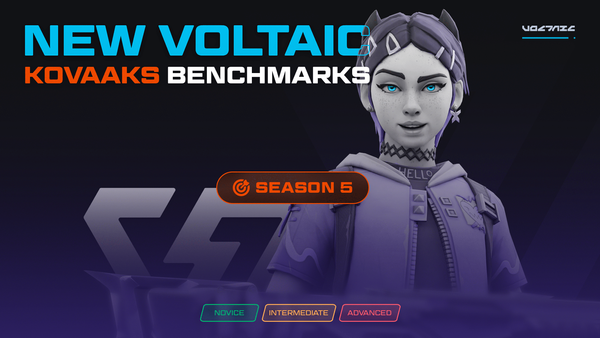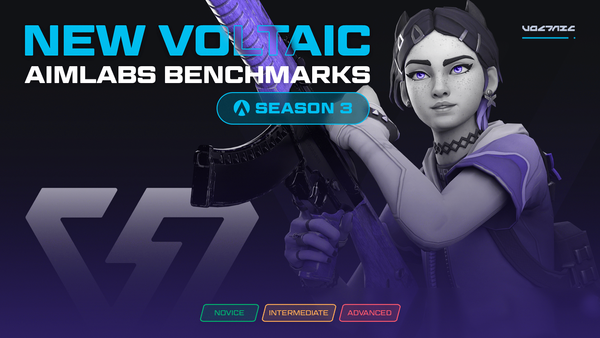Constructing an Improvement Based Mentality

Mindset for aspiring esports professionals and competitive FPS players
In the realm of amateur competition, players tend to obsessively focus on in-game factors from which they can see direct results. Mechanics of gameplay like aim and movement give some of the most satisfying feedback when success is achieved, but it can also be a source of debilitating negativity in the face of perceived failure. This error in mental framing becomes most potent when people inadvertently begin to assign their self-worth to the decisions that they make. A player seeing themselves in this way can cause their psychological state to only be as consistent as their play, while also leading to additional problems if left unchecked.
Building an objective baseline from which we can start our improvement process comes from acknowledging who we truly are when we’re trying to perform. When we’re competing in our respective games, we should view ourselves as two: the player which we will refer to as self one, and the person behind the screen who we’ll call self two. Self one is the amalgamation of all your in-game decisions and ability, making them responsible for all the ‘good’ or ‘bad’ actions you’ll take. Self two controls everything else, our emotions, our behavior, and our perception of the outcomes of our plays. Combining these two will create something we’re going to call player identity, which is the nature of the relationship between these two selves.
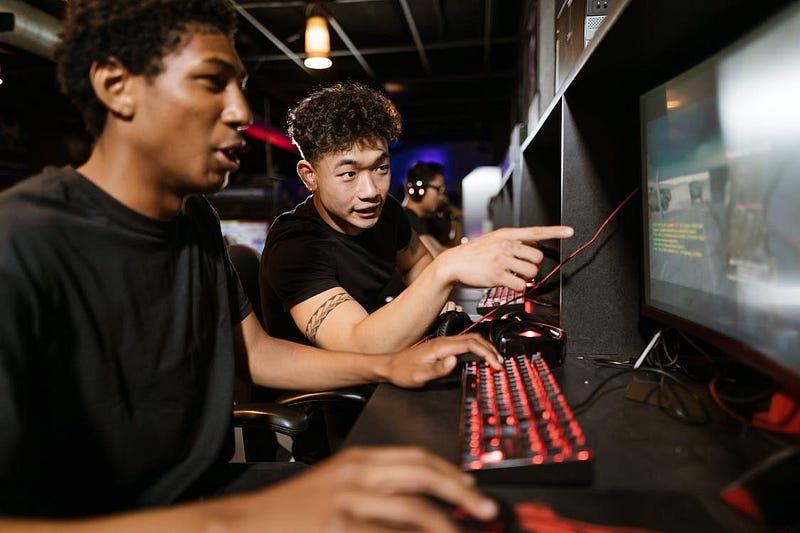
Whether you are aware of it or not, these two selves have a significant impact on how you’re able to see your game, and this is most noticeable when the relationship between them is unstable. If self one performs well, self two is usually happy and flow-state, a concept which we will visit in depth shortly, becomes handily achievable.
However, the issue arises when self one performs poorly, which isn’t an issue in itself as poor performances will always occur at some rate to everyone regardless of their level of proficiency. The problem that surfaces is the mental instability that can show itself following a poor performance, i.e when self two becomes incredibly critical of self one in a way that is no longer constructive. Self two takes the gameplay feedback it receives from self one and creates seemingly permanent statements such as “I am a bad player” or “I can’t improve,” slowly linking specific performances to your player identity. Some might justify the use of these phrases as “self-motivation” or something similar, however, most of the time what we’ll end up with is loss of confidence and a thoroughly corrupted mindset.
It is immensely important to learn the power language has on our improvement process and understand how it reshapes the way we see ourselves, as it’s a facet of improvement that’s commonly neglected. We should always strive to improve by being critical while remaining productive and objective. Instead of saying things like “I am bad”, which is not constructive or even accurate in most cases, we can say “I played that situation poorly, I’m going to do my best to improve next time”. The difference a language change like this makes is significant, and talking to ourselves in that manner disconnects negative statements from our identity.
Now that we understand the value of disconnecting negative performance-related statements from ourselves as people, the next step forward is to build our mindset and attitude towards the game. This approach will pave our path of improvement, which will determine how much effort we need in order to improve our chances of success.
Unlocking the Growth Mindset
Most people, without even realizing it, have a fixed mindset defined as the belief that a person’s abilities are innate and unchangeable. This mindset is usually developed at an early age, and can completely disincentivize a person from pursuing their goals, since they’ve been led to believe it’s outside the realm of possibility. For the people that do manage to be able to push through this, it’s common for them to obsess over what the end result of their improvement will look like. When the world puts champions on pedestals and credits renowned professionals with being gifted and talented, it’s easy to see how these things could infect how we see the improvement journey playing out. The main issue in competing with this mindset is that if you perform poorly and lose games you’ll only look at the scoreboard, elo, or any other statistic for that game, and derive your skill level from this fragmented snapshot of a specific performance. Instead of falling into this trap, take a step back and look to improve your process and point your focus towards aspects of play directly in your control. It’s important to internalize that with a fixed mindset you essentially give up before you begin because you don’t believe you can improve. You’ll know this applies to you if you find yourself downplaying your responsibility in your play and making excuses based on things like talent, genetics, gear, or other factors.

However, some players seemingly breeze through every game they play like it’s nothing and they always reach the top 1%, how?
None of them have a fixed mindset, they instead adopt a growth mindset.
In the fixed mindset, everything is about the outcome. If you fail — or if you’re not the best — it’s all been wasted. The growth mindset allows people to value what they’re doing regardless of the outcome. They’re tackling problems, charting new courses, working on important issues
- Carol S Dweck (2006), Mindset: The New Psychology of Success
The growth mindset puts your improvement completely within your control, making the process your focus rather than the outcome. With this, challenge becomes a learning opportunity and is not viewed as something that should be feared or avoided. Doing your best to push yourself as much as possible will take you out of your comfort zone and give you the chance to reach new heights. When a mistake presents itself you need to apply the “Why?” “What?” “How?” formula: why did the mistake happen, what can I do to avoid it in the future, and how am I going to proceed to implement this fix next time.
Understanding the mechanisms behind flow
Going back to the two selves theory, I have mentioned that if the two selves are in harmony you achieve something called flow. You can view flow as a state of hyper-focus where you can subconsciously make split-second decisions that are optimal to your specific level of proficiency. Self-criticism and self-praise in the face of performing will make your self-perception erratic and inaccurate, while disrupting the focus required to achieve flow. In order to have the two selves in harmony, you need to learn how to let go of criticism and praise. This allows you to enter this state of hyper-focus that may feel similar to auto-pilot but operates differently. Where auto-piloting is making decisions passively while unfocused, flow is the idea that you don’t put active effort into your decisions while you’re hyper-focused.
If you are interested in something, you will focus on it, and if you focus attention on anything, you will likely become interested in it. Many of the things we find interesting are not so by nature, but because we took the trouble of paying attention to them.
- Mihaly Csikszentmihalyi (1997), Finding Flow: The Psychology of Engagement with Everyday Life
Besides letting go of self-criticism and praise, the nature in which you’re being challenged factors heavily into attaining the level of focus required to initiate flow. If the game you are playing feels too easy, you will fall into a state of auto-pilot, but if the game is too hard you risk becoming overly anxious and unsure of yourself in the face of your opponents. The perfect balance is when the game’s difficulty is slightly harder than what you can handle, but not so difficult that you don’t have a fighting chance. Most modern competitive games provide this experience with a built-in matchmaking feature.

Having covered the various modes of thinking to adopt while competing, you may have noticed that the requirements to achieve flow and the guidelines for maintaining a growth mindset contradict each other. While the growth mindset promotes self-criticism and praise, flow promotes a stoic approach where you can fully concentrate on the task at hand. For this reason, it’s important to separate these two cognitive approaches into isolated states of thinking that are to be entered and exited deliberately. We call the steps being taken to achieve the level of focus required for flow the Performance Zone, and the self-critical iterative process optimized for improvement the Learning Zone.
You can see the aspects of these zones detailed below, and even see how they mirror each other in some cases.

Knowing when to enter or exit each zone is based on the individual, as every single person learns in different ways and at different rates. You can technically prioritize the Learning Zone whenever you aren’t trying to perform, but for some, switching back and forth in this manner can be overwhelming or even inefficient for their learning style.
A very useful tool to help you employ the Learning Zone is VOD review. VOD, or Video On Demand, is a recording of your play. If you are willing to review your VODs, you can channel your focus into performance mode, as you can review your mistakes afterward and not feel the need to constantly govern your play. If you are not willing to VOD review, you will want to apply a growth mindset most of the time, especially during low points in the middle of play. You can use lulls in action or occasions where you may be spectating to apply the “Why, What, How” formula as previously outlined.

At this point, we have built procedures around logical thinking’s specific applications towards improving. With this comes the expectation that the individual attempting to make use of these principles is not obstructed by any other issues, and has a mental blank slate primed to seamlessly juggle all of these aspects of improvement based thinking. However, this is almost never the case as humans are not computers. We are emotional beings that have a mild ability to compute. It’s incredibly easy for our thought process to be halted or even corrupted by doubt, anxiety, and several other emotions that act in direct opposition to our attempts at improvement. To keep things simple, we’re going to refer to the suboptimal state as tilt, and the optimal state as psychological equilibrium.
Tilt is a Poker term for a state of mental/emotional confusion or frustration in which a player adopts a less than optimal strategy, usually resulting in the player becoming overly aggressive - Wikipedia definition
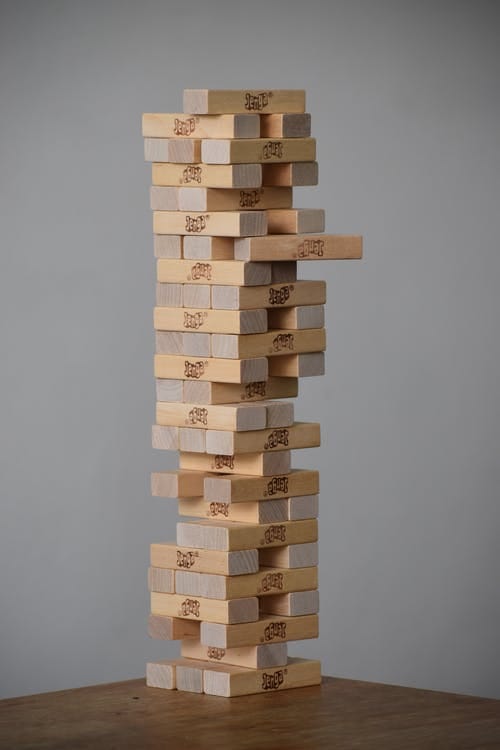
Being in either state is a choice to a certain extent, as it all has to do with the way we control our emotions and how we prime our brain to react to certain situations. If we are not primed to deal with negative situations and the thoughts that are born out of them, we risk reaching a point where we may lose our way in the heat of competition. The specifics behind the way we prepare for these incidents, starts with understanding what the amygdala is and how it functions. The amygdala is one of the most important components of our brains; it’s responsible for regulating our emotions and it also attaches memories to those emotions, this is called an emotional remembrance.
Emotional remembrances can be viewed as someone’s instinctive reaction to situations that happen in-game and they heavily change the efficiency of improvement as they dictate whether or not we enter tilt or equilibrium.
Psychological equilibrium is the ability of a person to maintain a balanced understanding related to external and internal dichotomies that may impact thought, behavior, and attitude — IGi Global definition
The way you shape your emotional remembrances is relatively simple, it’s all about the way you choose to react to a given situation regularly. It is your choice to get angry at your teammates, to give up, and/or to not care about the game if you/teammates perform poorly. If you can be honest with yourself about the breadth and depth of problems that incite tilt for you, introspection and analysis becomes significantly easier to focus on. You become able to prioritize fixes to mistakes that are made while you eliminate all factors that are irrelevant to your improvement. Depending on how much playtime you already have, you’ve already shaped your emotional remembrances, and if your instinct is to blame your teammates or focus on external factors that don’t matter, you will need to put in extra effort to restructure the way you think.
Let’s talk about playtime quality.
There is a very popular belief that players need to spend eight or more hours a day to improve, and anything less is leaving improvement gains on the table. Most people spend 8 hours straight playing competitive modes but in reality, they likely suffer from diminishing returns. After a certain point, players are likely fatigued and can no longer deliberately play or practice; they have simply lost the ability to focus and are likely on auto-pilot. Additionally, if the players do not have a deliberate practice plan, they are inefficiently practicing and are leaving gains on the table. It is incredibly important to establish a practice plan that works for you.
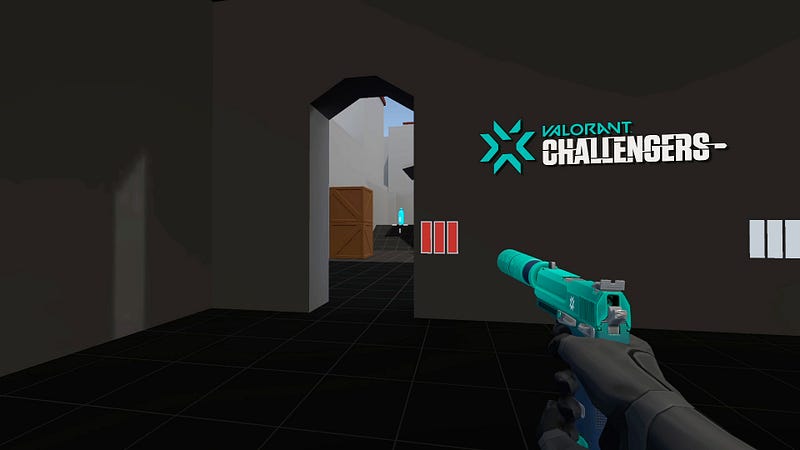
Having a plan comes mainly by doing two things: one, breaking your game down into the fundamentals and two, consistently addressing them until they are mastered. Building out time to address your flaws optimally while also giving you time to perform comes from creating a good schedule you can maintain over an extended period of time.
Unfortunately, there is no empirical evidence on the exact amount a person can focus per day as this likely varies from person to person. However, there are many articles that claim that the average attention span could range between 4–5 hours. This doesn’t mean you should sit down in front of your screen for 4–5 hours and be under the impression that you’re working at maximum efficiency. There are many factors that contribute to how well you can focus, what you need to do is accept your limitations and try to sustain as much focus as you can handle while being as efficient as possible in the time frame allotted.
To fully benefit from the time you’re able to focus, consider these scheduling tips:
- Suppress or turn off all distractions whether it’s background applications like Twitter, Discord, or Twitch Streams.
- As previously discussed, build a schedule that donates enough time to your craft, while also being manageable for the level of focus you can sustain.
- Consider splitting your sessions into chunks that give you a chance to reset so you can come back fresh minded.
I’d also highly recommend you also check out our health guidelines and Sleep theory guides to further improve the quality of your focus and potentially even the duration of it, healthy body, healthy mind!
Credits
Below are the people who created this document.
- EMPIRiC — Conception, Writing, Formatting.
- driize — Conception, Feedback.
- Grissom — Writing, Formatting, Feedback.
- Slappymelvs — editing, feedback


